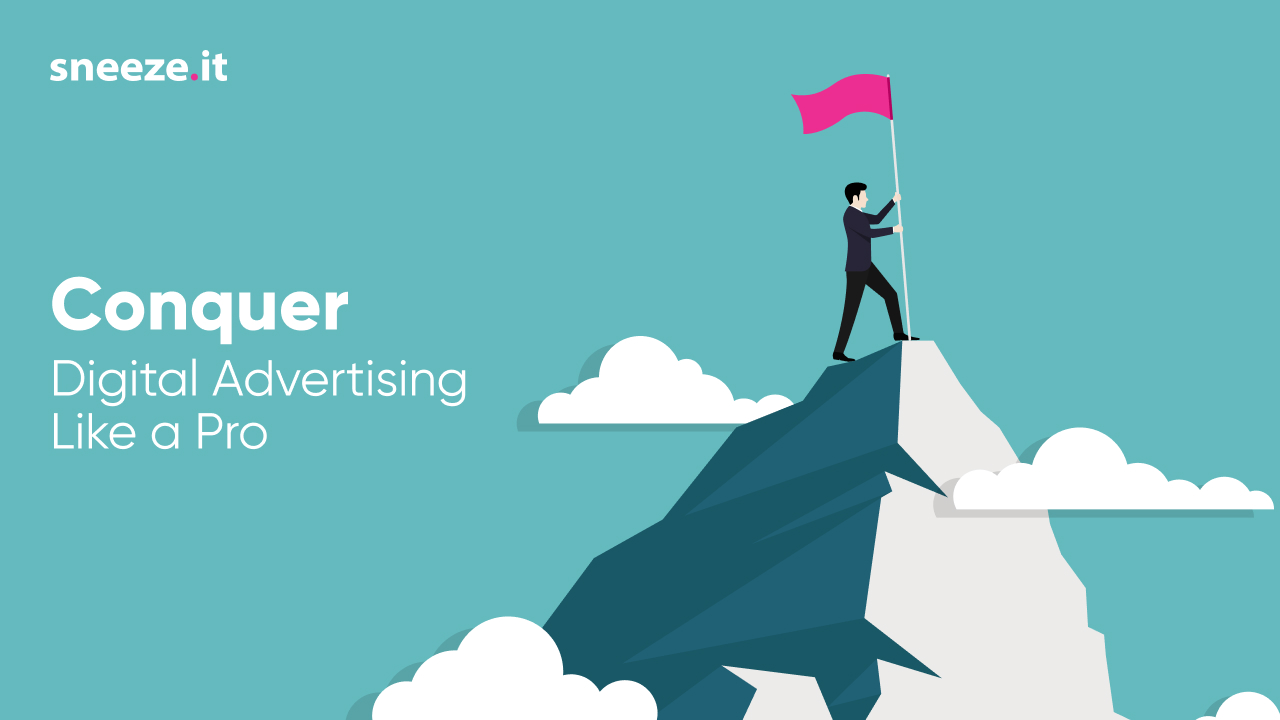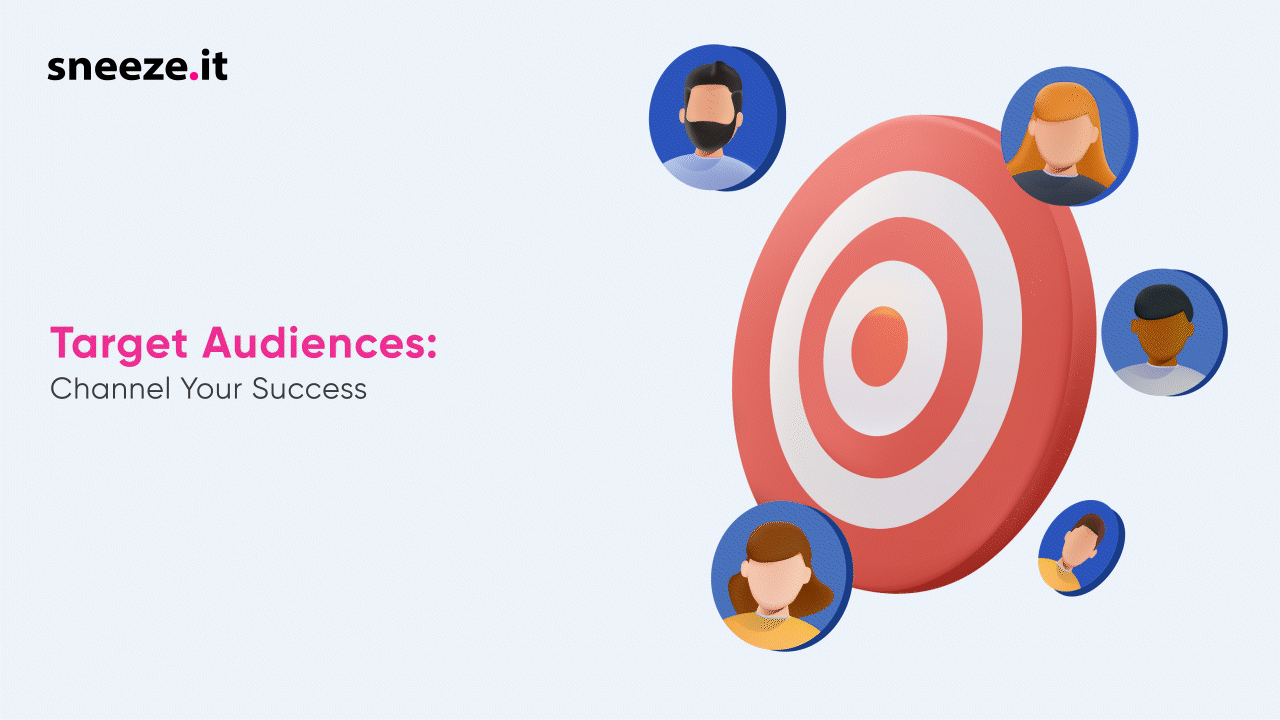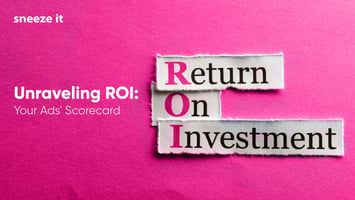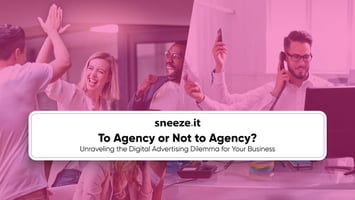As a business owner exploring digital advertising options or considering hiring a digital...
Exploring the Digital Advertising Ecosystem: A Beginner’s Guide

Digital advertising is an essential component of any modern marketing strategy. With an ever-growing number of platforms available, it can be challenging for business owners to decide which ones are the best fit for their objectives. In this comprehensive guide, we'll explore a variety of digital advertising platforms, including some lesser-known options, to help you make an informed decision. We'll cover their strengths, weaknesses, best practices, and tips for success. Let's get started!
Google Ads - The Search Giant

Google Ads is the world's leading digital advertising platform, allowing you to place your ads on Google's search engine results pages (SERPs) and throughout its extensive network of partner websites. With a vast reach and robust targeting options, Google Ads is an essential tool for businesses looking to drive traffic, generate leads, and boost sales.
Strengths:
- Unparalleled reach: Google processes over 3.5 billion searches per day, offering immense exposure for your ads.
- Intent-based targeting: By targeting users based on their search queries, you can reach potential customers who are actively looking for your products or services.
- Robust targeting options: Google Ads allows you to target users based on demographics, location, interests, and more.
- Measurable ROI: Google Ads offers detailed analytics and conversion tracking, making it easy to measure the success of your campaigns.
Weaknesses:
- Competitive: Popular keywords can be expensive, driving up your cost per click (CPC).
- Learning curve: Google Ads can be complex, requiring time and expertise to master.
- Ad blindness: Some users may ignore ads on SERPs, impacting your click-through rate (CTR).
Best Practices:
- Conduct keyword research to identify the most relevant and cost-effective keywords for your campaigns.
- Create compelling ad copy that speaks directly to your target audience's needs and pain points.
- Monitor and optimize your campaigns regularly, adjusting bids, targeting, and ad copy as needed.
Facebook Ads - The Social Powerhouse

With over 2.8 billion monthly active users, Facebook Ads offers a powerful platform for reaching your target audience on the world's largest social network. From promoting your products and services to building brand awareness, Facebook Ads provides a versatile solution for businesses looking to tap into the power of social media advertising.
Strengths:
- Massive user base: Facebook's extensive reach allows you to connect with potential customers on a global scale.
- Advanced targeting options: Facebook Ads enables you to target users based on demographics, interests, behaviors, and connections, ensuring your ads reach the right audience.
- Variety of ad formats: From image and video ads to carousel and collection ads, Facebook offers a range of ad formats to suit your objectives.
- Analytics and tracking: Facebook Ads Manager provides in-depth insights into ad performance and audience engagement.
Weaknesses:
- Declining organic reach: As Facebook prioritizes paid content, businesses may struggle to reach their audience organically.
- Ad fatigue: Users may become desensitized to ads on Facebook, reducing the effectiveness of your campaigns.
- Complexity: Facebook Ads Manager can be overwhelming for beginners, with a steep learning curve.
Best Practices:
- Define your target audience and use Facebook's advanced targeting options to reach them.
- Test different ad formats and creatives to determine what resonates best with your audience.
- Monitor and adjust your campaigns regularly, focusing on metrics like CTR, conversions, and cost per action (CPA).
Instagram Ads - Visual Storytelling

As a subsidiary of Facebook, Instagram Ads offers businesses the opportunity to reach a highly engaged audience through visually appealing content. With over 1billion monthly active users, Instagram is an ideal platform for businesses looking to showcase their products or services through images and videos.
Strengths:
- Highly engaged audience: Instagram users are more likely to engage with ads compared to other social media platforms.
- Visual focus: The platform's emphasis on images and videos allows for creative, visually appealing ad campaigns.
- Seamless integration with Facebook Ads: You can manage Instagram Ads through Facebook Ads Manager, streamlining your advertising efforts.
- Influencer marketing opportunities: Instagram is a popular platform for influencer marketing, allowing you to leverage the power of social proof.
Weaknesses:
- Limited demographics: Instagram's user base skews younger, which may not be ideal for all businesses.
- Ad competition: With the increasing popularity of Instagram Ads, businesses may face higher costs and competition for ad placements.
- Limited ad formats: Instagram offers fewer ad formats compared to Facebook, which may limit your campaign's versatility.
Best Practices:
- Use high-quality images and videos that showcase your products or services in an engaging and authentic way.
- Leverage Instagram Stories ads to reach users in a more casual and immersive format.
- Incorporate user-generated content and influencer partnerships to build trust and credibility.
LinkedIn Ads - B2B Networking

LinkedIn Ads is the premier platform for B2B advertising, allowing businesses to reach a professional audience of over 774 million members. With a focus on career and industry-related content, LinkedIn is an excellent choice for businesses looking to generate leads, promote events, or recruit talent.
Strengths:
- Professional audience: LinkedIn's user base consists primarily of professionals, making it ideal for B2B advertising.
- Industry-specific targeting: LinkedIn Ads allows you to target users based on job titles, industries, and company sizes, ensuring your ads reach the right professionals.
- Sponsored InMail: Send personalized messages directly to your target audience's LinkedIn inboxes.
- High-quality leads: LinkedIn's professional focus can lead to higher-quality leads and conversions.
Weaknesses:
- Higher cost: LinkedIn Ads typically have a higher CPC and CPM compared to other platforms.
- Limited user engagement: Users may spend less time on LinkedIn compared to other social networks, potentially reducing ad exposure.
- Niche platform: LinkedIn Ads may not be the best choice for B2C businesses or companies targeting a broader audience.
Best Practices:
- Create ads that speak to the specific needs and pain points of your target audience.
- Leverage LinkedIn's unique ad formats, such as Sponsored InMail and Sponsored Content, to engage users in a professional context.
- Monitor and optimize your campaigns regularly, focusing on metrics like lead quality, conversion rates, and cost per lead (CPL).
TikTok Ads - Captivating Short-Form Video

TikTok is a rapidly growing platform known for its engaging, short-form video content. With over 1 billion monthly active users, TikTok Ads offers businesses the opportunity to reach a predominantly young, creative audience through immersive full-screen video ads.
Strengths:
- Viral potential: TikTok's algorithm and user behavior can lead to massive organic reach if your ad resonates with the audience.
- Highly engaged users: TikTok users spend an average of 52 minutes per day on the app, providing ample opportunity for ad exposure.
- Creative ad formats: Leverage short-form video content to create captivating and shareable ads.
Weaknesses:
- Limited demographic reach: TikTok's user base is primarily younger users, potentially limiting the platform's effectiveness for businesses targeting an older audience.
- Evolving ad platform: TikTok Ads is still developing, with fewer targeting options and less robust analytics compared to more established platforms.
Best Practices:
- Embrace the platform's creative nature and develop unique, engaging ads that blend seamlessly with user-generated content.
- Partner with TikTok influencers to expand your reach and leverage the power of social proof.
- Test different targeting options and ad creatives to determine what resonates best with your audience.
Waze Ads - Navigating Local Advertising

Waze is a popular community-driven navigation app that offers businesses the opportunity to reach local customers through location-based ads. With over 140 million monthly active users, Waze Ads can help drive foot traffic and increase brand awareness in your local area.
Strengths:
- Location-based targeting: Reach users when they are near your business or searching for relevant local services.
- High intent audience: Users on Waze are typically actively navigating, making them more likely to engage with location-based ads.
- Variety of ad formats: Choose from branded pins, promoted search, or zero-speed takeover ads to best suit your objectives.
Weaknesses:
- Limited audience: Waze Ads is best suited for businesses targeting a local audience, making it less effective for broader or global campaigns.
- Dependent on user behavior: Ad visibility relies on users actively using the app for navigation.
Best Practices:
- Create visually appealing branded pins to stand out on the map.
- Offer promotions or incentives to encourage users to visit your business.
- Monitor and optimize your campaigns to maximize visibility and engagement.
Bing Ads - The Search Alternative

Bing Ads, now known as Microsoft Advertising, is the search advertising platform for the Bing search engine. Although it has a smaller market share compared to Google, Bing Ads offers a cost-effective alternative for businesses looking to diversify their search advertising efforts.
Strengths:
- Lower competition: Bing Ads typically has less competition compared to Google Ads, resulting in lower CPCs.
- Unique audience: Bing users may differ demographically from Google users, providing an opportunity to reach a unique audience.
- Integration with Microsoft Advertising Network: Reach users across Microsoft's network of websites and services.
Weaknesses:
- Limited reach: Bing has a smaller market share compared to Google, resulting in fewer overall impressions.
- Less sophisticated platform: Bing Ads has fewer features and less robust targeting options compared to Google Ads.
Best Practices:
- Conduct keyword research specific to Bing to identify opportunities for your campaigns.
- Leverage Bing Ads' unique features, such as image extensions and action extensions, to enhance your ad creatives.
- Monitor and optimize your campaigns regularly to ensure cost-effective results and maintain a competitive edge.
Pinterest Ads - Visual Discovery and Inspiration

Pinterest is a visual discovery platform where users search and save ideas for various interests, ranging from recipes and home decor to fashion and travel. With over 450 million monthly active users, Pinterest Ads offers businesses the opportunity to reach a predominantly female audience through visually appealing, actionable content.
Strengths:
- High intent users: Pinterest users actively search for inspiration and ideas, often with the intent to purchase.
- Rich targeting options: Target users based on interests, keywords, and demographics.
- Variety of ad formats: Choose from promoted pins, promoted video pins, or promoted carousels to best showcase your products or services.
Weaknesses:
- Niche audience: Pinterest's user base may not be representative of the general population, making it less effective for some businesses.
- Requires high-quality visuals: Success on Pinterest relies heavily on eye-catching imagery and creative design.
Best Practices:
- Use high-quality images and engaging descriptions to create visually appealing, actionable pins.
- Align your ad content with popular Pinterest categories, such as fashion, home decor, or travel.
- Analyze user engagement and conversion data to optimize your campaigns and improve your targeting.
YouTube Ads - Video Advertising Powerhouse

As the world's largest video-sharing platform, YouTube offers businesses a vast audience and various ad formats to reach potential customers through video advertising. With over 2 billion monthly active users, YouTube Ads enables businesses to drive brand awareness, generate leads, and boost sales through engaging video content.
Strengths:
- Extensive reach: YouTube is the second most visited website globally, offering tremendous exposure for your ads.
- Targeting capabilities: Leverage Google Ads' targeting options, including demographics, interests, and placements, to reach your ideal audience.
- Variety of ad formats: Choose from skippable and non-skippable in-stream ads, video discovery ads, or bumper ads to best suit your objectives.
Weaknesses:
- Requires video content: YouTube Ads relies on high-quality video content, which may be more resource-intensive than other ad formats.
- Ad avoidance: Users may skip or ignore ads, impacting your view rates and overall effectiveness.
Best Practices:
- Develop engaging video content that captures viewers' attention and communicates your message effectively.
- Test different ad formats and targeting options to determine what drives the best results for your campaigns.
- Monitor and optimize your campaigns, focusing on metrics like view rates, watch time, and conversions.
OTT Advertising - Reaching Cord-Cutters

Over-the-top (OTT) advertising refers to ads delivered through streaming services, such as Hulu, Roku, and Amazon Fire TV. As more consumers cut the cord and move away from traditional TV, OTT advertising offers businesses the opportunity to reach these viewers through highly targeted, non-skippable video ads.
Strengths:
- Highly engaged audience: OTT viewers typically watch content on larger screens and are less likely to multitask, resulting in higher ad engagement.
- Advanced targeting: Reach users based on demographics, interests, and viewing habits.
- Measurable results: Gain insights into ad performance, including impressions, completion rates, and conversions.
Weaknesses:
- Fragmented landscape: The OTT advertising ecosystem is fragmented, with numerous platforms and services to navigate.
- Limited inventory: High demand and limited ad inventory can result in higher ad costs.
Best Practices:
- Develop high-quality video content that captures viewers' attention and effectively communicates your message.
- Partner with an OTT advertising agency or platform to streamline the process and ensure efficient ad placements.
- Test and optimize your campaigns based on performance metrics, such as completion rates, viewability, and conversions.
Other Advertising Platforms - Niche Opportunities

In addition to the more prominent digital advertising platforms, there are numerous niche platforms that cater to specific audiences or industries. These lesser-known platforms can offer unique opportunities for businesses to reach highly targeted, engaged users.
Examples of Obscure Advertising Platforms:
- Spotify Ads: Reach users through audio ads on the popular music streaming platform.
- Quora Ads: Engage with a curious, knowledge-seeking audience by placing ads within relevant questions and answers on Quora.
- Reddit Ads: Reach passionate, engaged communities on the popular forum-based platform through promoted posts or display ads.
- Taboola/Outbrain: Drive traffic to your content through native advertising on a vast network of publisher sites.
Strengths:
- Unique targeting opportunities: Niche platforms often cater to specific audiences or industries, providing highly targeted advertising opportunities.
- Less competition: Obscure advertising platforms may have lower competition and ad costs compared to more mainstream options.
Weaknesses:
- Limited reach: Niche platforms generally have smaller user bases, which can limit overall ad exposure.
- Learning curve: Each platform may require unique strategies and tactics, increasing the time and effort needed to optimize campaigns.
Best Practices:
- Research each platform to determine if it aligns with your target audience and business objectives.
- Test different ad formats, targeting options, and creatives to identify the most effective strategies for each platform.
- Monitor and optimize your campaigns regularly to ensure cost-effective results and maintain a competitive edge.
The digital advertising ecosystem is vast and ever-evolving, with numerous platforms catering to diverse audiences and objectives. By exploring these platforms and understanding their strengths, weaknesses, and best practices, you can make informed decisions about which options are the best fit for your business. Whether you're considering mainstream platforms like Google Ads or more obscure options like Reddit Ads, the key to success is understanding your audience, aligning your strategy with your goals, and continually optimizing your campaigns for maximum impact.
Ready to dive deeper? Read our Comprehensive Guide to Digital Advertising.
If you want to get a glimpse of how we at Sneeze It leverage these platforms to conduct the RIGHT strategy for our clients and what it would look like for you, schedule your call below!





